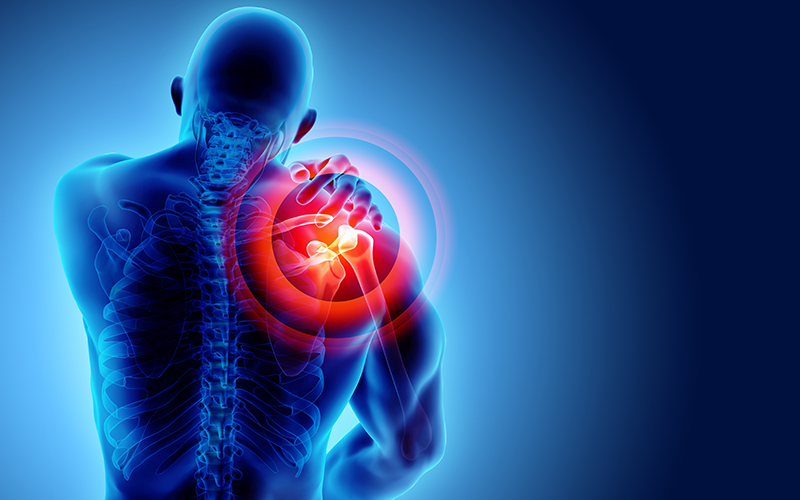
When it comes to shoulders, it is widely acknowledged that the glenohumeral joint (the GHJ, the shoulder joint that occurs due to the upper arm bone “attaching” to the body) has the most range of motion in the body. This joint can externally and internally rotate (as with reaching behind the head or reaching behind the back), flex and extend (as with reaching in front or behind), and adduct and abduct (as with reaching across the body or reaching out away from the body). In order to achieve such mobility, the shoulder blade must also move to allow the glenohumeral joint to be positioned appropriately.
With typical “glenohumeral rhythm”, the shoulder blade rotates on a pivot to allow the GHJ to be in a position such that the arm can be raised and lowered. When a shoulder is moving within its typical limitations, rotation of the shoulder blade occurs once the arm has been raised approximately 30-60° from the side of the body. The shoulder blade comprises of roughly 1/3 of the shoulder motion for reaching in front and to the side, about 60° worth of motion!
When the shoulder blade is in a poor position, rotation of the shoulder blade does not occur as readily and the amount that the shoulder blade is allowed to rotate can be decreased substantially. When we lose our posture throughout the course of the day with fatigue, the shoulder blades can be drawn forward by tightened chest wall musculature and be pulled away from the spine in a fashion that impedes their movement. When this occurs, the shoulder blades are not allowed to upwardly or downwardly rotate appropriately causing for a reduction of space in the GHJ and a resulting “pinching” on tendons, bursae, and other structures in the region. Repetitive movements leading to such pinching type sensations will lead to repetitive “microtraumas” in the area which over time, accumulate and cause for more significant damage. Studies have also shown that when healthy subjects are poised in different positioning (slouched vs. good upright posture) the scapula is forced to elevate as opposed to rotate leading to a significant decrease in range of motion as well as a reduction in force generation (strength) the further the arm is raised away from the body.
What are the implications of poor posture on shoulder pain? Well put simply, poor posture, AKA slouching, can lead to reductions in strength and range of motion which both may play a role in continued pain in the shoulder joint. Luckily, with a good stretching and strengthening program, these changes in motion and strength are largely reversible! Physical therapy can be a great way to help avoid future trauma and injury to the area by helping with fine tuning movement patterns and the way that we hold our body on a regular basis during day to day activity to avoid compensatory movement strategies. Physical therapy can help to strengthen the and stabilizers of the shoulder blade as well as loosen tight chest wall musculature that may pull the should blades into an undesirable position.
Sources:
“Thoracic position effect on shoulder range of motion, strength, and three-dimensional scapular kinematics”. Kebaetse, Maikutlo et al. Archives of Physical Medicine and Rehabilitation , Volume 80 , Issue 8 , 945 – 950

